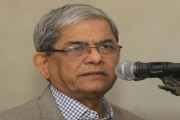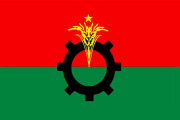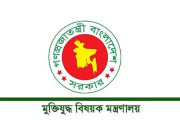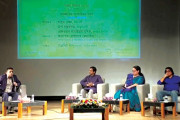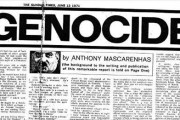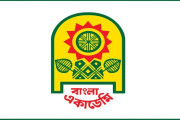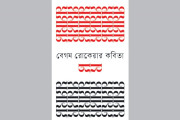UNB, Dhaka: Thursday marks the 86th birth anniversary of the legendary filmmaker and freedom fighter Zahir Raihan, best remembered for capturing the 1971 Liberation War on celluloid.
Born as Mohammad Zahirullah on August 19, 1935, in Majupur village of the then Feni mahakuma in Noakhali district, Raihan initially studied at Calcutta Alia Madrasah in India, where his father was a professor.
After the Partition of India in 1947, his family moved back to his ancestral village in Feni. Three years later, he successfully completed matriculation from Amirabad High School. And that year only, he started working as a journalist for Juger Alo.
Although he joined medical college after completing his intermediate examination from Dhaka College in 1953, Raihan eventually dropped out. However, he later obtained his Bachelor of Arts degree in Bangla from Dhaka University in 1958.
After Juger Alo, he had worked with many other newspapers, namely Khapchhara, Jantrik, and Cinema. He also served as the editor of Probaho in 1956. His first collection of short stories ‘Suryagrahan’ was published in 1955. He was also one of the publishers of English Weekly Express.
Raihan went back to Calcutta (now Kolkata) and joined Pramatesh Burua Memorial Photography School in 1952 to learn photography. His career in the film industry began with the film ‘Jago Huye Savera’ in 1957, where he worked as an assistant director.
As the assistant director, he had also worked with director Salahuddin in the film ‘Je Nodi Morupothay’ and Ehtesham in ‘Ei Desh Tomar Amar’. His first directorial venture ‘Kokhono Asheni’ was released in 1961.
After that, Raihan successfully launched two of his revolutionary attempts as a director in 1964 by making the movie ‘Sangam’, Pakistan’s first-ever coloured film, and ‘Bahana’, Pakistan’s first cinemascope Urdu film.
He was gradually becoming more and more successful during that time as a director with back-to-back hits such as ‘Sonar Kajol’ (1962, jointly directed with Kolim Sharafi), ‘Kancher Deyal’ (1963), ‘Behula’ (1966), ‘Anowara’ (1966) and ‘Agun Niye Khela’ (1967).
Through his movies, he had launched several prominent artistes, most notably Nayak Raj Razzak and Babita, and worked frequently with prominent actor-directors Amzad Hossain and Khan Ataur Rahman.
As the nation’s political situation was getting chaotic more than ever during the time, Raihan was continuously feeling the zeal to break every shackle imposed by then Pakistani rulers. He actively participated in the 1952 Language Movement and 1969’s Mass Uprising.
At that time, Raihan felt the urgency of making a film based on both of these remarkable movements, and thus made his legendary film ‘Jeebon Theke Neya’ in 1970, considered an example of ‘National Cinema’, using discrete local traditions to build a representation of the Bangladeshi national identity. The classic is considered a milestone in Bangladeshi cinema.
During the 1971 Liberation War of Bangladesh, Raihan began creating English documentary films on the subject, including ‘Let There Be Light’, which he could not finish because of the break out of the war. After the historic 25th March of 1971, he went to Calcutta and made his acclaimed documentary ‘Stop Genocide’, highlighting the massacre orchestrated by the Pakistani Army.
There he also showed his film ‘Jeebon Theke Neya’, which was highly acclaimed by legendary filmmakers, including Satyajit Ray, Ritwik Ghatak, Mrinal Sen and Tapan Sinha. Despite his financial hardships at the time, he donated all the proceeds from the Calcutta event to the Freedom Fighters Trust.
In his short-spanned career as a writer, Raihan was successful in narrating some of the most prolific and true-to-life stories ever published in Bangladeshi literature, through his books — Shesh Bikeler Meye, Arek Phalgun, Trishna, Borof Gola Nodi and most notably, Hajar Bochhor Dhore.
Raihan had been married twice, to Sumita Devi in 1961 and Shuchonda in 1968, both popular film actresses. With Sumita, he had two sons named Bipul Raihan and Anol Raihan. With Shuchonda, he also had two sons named Opu Raihan and Topu Raihan.
On January 30, 1972, Raihan went missing while attempting to locate his brother, Shahidullah Kaiser, a well-known writer who was abducted and killed by the Pakistani Army and its local collaborators. Raihan is believed to have been killed by armed Bihari collaborators and the Pakistani Army hiding who had opened fire on them while they were travelling towards Mirpur in Dhaka.
For his excellence in filmmaking as a valiant patriot, Raihan was posthumously awarded Bangla Academy Literary Award (1972), Ekushey Padak (1977), Independence Day Award (1992) and Bangladesh National Film Awards (2005).






















